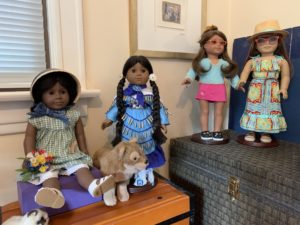What if every woman in America went on strike. Today. Indefinitely. No woman shows up for their fast- food job, their nighttime cleaning job, teaching job, daycare, nursing, doctoring, lawyering, retail clerking, banking, government and social service, bus driving….
EVERY WOMAN GOES HOME and stays there: to take care of her children, her aging parents, her grandchildren, her husband on disability, her toddler without access to preschool, her teenager under home detention or detox or covid quarantine. She picks up the clutter. She washes the dishes. She catches up with the mountain of laundry. She shops for groceries in several places to find the most economical buys. She devises a budget and holds everyone in check from their anti-social impulses. She shows up at school to make sure the kids are being respected, encouraged, and educated in the essentials, like reading.
You know. She does all these things (and more) that someone managing a home and family has to take care of. In the absence of childcare, hired help, home health care assistance, a domestic partner, and simple access to routine, urgent, and emergency medical care, she has to do it all. Not going out “to work” will free her time to perform these vital activities on society’s behalf.
WHAT HAPPENS WHEN ALL THE WOMEN STAY HOME?
Today, with the threatened removal of the protection of Roe v. Wade, WOMEN once again will be weighted beyond human endurance by the burden of Old White Male assumptions about how things in real life get done.
Let it be said: NO ONE believes that abortion is a good thing. However, the personal freedom to make a decision about giving birth belongs to every woman without government interference.
The government seems perfectly happy not to provide for child care and health care and public education, even when supporting families and a healthy population would seem favorable for the function of…everything.
Use this exercise in imagination to notice that individuals are not independent entities. Neither are families, neighborhoods, cities, states, and nations. We are one human family. We function by free choice, if at all possible, in the entanglement of life.
As the saying goes, “The truth will set you free.” And the ultimate truth is: We are loved without boundaries by the creator of the universe, and we are called to love others the same way.
If we don’t, and choose to keep destroying each other, I’m certain that the creator has infinite other plans.







Recent Comments